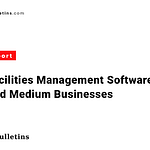Introduction
In large organizations, the volume, variety, and sensitivity of documents are enormous. Contracts, invoices, policies, research, design documents, customer records, compliance documentation—all must be stored, searched, versioned, shared, and retired in a controlled way. A strong Document Management Software (DMS) helps enterprises maintain order, ensure security and compliance, reduce redundancy, improve collaboration, and enable efficient workflows across departments and geographies.
However, choosing the right DMS is challenging. Enterprises must weigh ease of use, core functionality (storage, version control, workflow automation, search), integration with other systems (ERP, CRM, collaboration tools), scalability (large numbers of documents/users), pricing (per user, per storage, enterprise licensing), and what actual users report. This article reviews five leading Document Management Software solutions for enterprise use, evaluating them across those criteria.
Methodology
Each product is assessed based on:
- Ease of Use – How intuitive the UI is, how steep the learning curve for staff, administrators, etc.
- Core Features – Version control, metadata, search (full-text or semantic), workflow approvals, document lifecycle, audit trails, security features.
- Integration Capabilities – APIs, tie-ins with ERP/CRM, collaboration suites, cloud storage, identity/auth systems.
- Scalability – Ability to handle large volumes of documents/users; cloud vs on-premise options; performance under load.
- Pricing – Whether there are free plans / tiers, how enterprise pricing works, storage costs, etc.
- Customer Feedback – Average ratings, main pros/cons, sample user quote.
Top 5 Document Management Software for Enterprises
Here are five enterprise-grade DMS tools, their strengths, and trade-offs.
1. Microsoft SharePoint / Microsoft 365 SharePoint
Overview: SharePoint is part of the Microsoft 365 / Office suite, and is widely used for content management, document storage & collaboration in large enterprises. It’s ideal for organizations already leveraging Microsoft tools, seeking strong integration with Word, Teams, Outlook, and wanting both document management and collaboration capabilities.
Key Features:
- Content libraries with metadata, version control, co-authoring, document check-in/check-out.
- Workflow automation via Power Automate; approvals, review processes.
- Granular access control / permissions, records management, retention, compliance features.
- Advanced search including metadata, term sets, enterprise content management (ECM) features.
- Integration with other Microsoft 365 tools (Teams, OneDrive), custom development & extensibility (SPFx etc.).
Benchmark Performance:
- Ease of Use: Good — familiar Microsoft interface, many users already trained on some parts.
- Data Integration: Strong — especially with Microsoft stack; third-party connectors exist.
- Visualization: Good — dashboards via Power BI, document libraries with metadata filters.
- Scalability: Excellent — supports large enterprise deployments, hybrid cloud or on-premise as needed.
Pricing:
- Free Plan: No (but included with many Microsoft 365 enterprise subscriptions)
- Starter / Professional: Yes via Microsoft 365 Business / Enterprise tiers
- Enterprise: Yes (custom or high-tier plans)
- Free Trial: Yes (Microsoft usually offers trial of Microsoft 365 / SharePoint tiers)
Customer Reviews:
- Average Rating: High among enterprise users; many report satisfaction with collaboration, compliance; occasionally mixed feedback for complexity.
- Pros: Deep integration with Microsoft ecosystem; very strong metadata & compliance capabilities; ubiquitous usage so many staff already familiar.
- Cons: Can become complex to administer at scale; managing permissions/governance requires care; some features require additional licensing.
- Customer Quote: “We love that our teams can edit together in real time, link documents across Teams and SharePoint, and still have retention policies and audit enforced, though setting up proper governance took a dedicated project.”
2. OpenText Documentum (OpenText ECM / Documentum Content Management)
Overview: OpenText Documentum is a long-standing leader in enterprise content management, especially in regulated industries like life sciences, finance, and government. It offers strong governance, compliance, scalability, and features tailored for high document volumes and complex content lifecycles.
Key Features:
- Content capture/classification, OCR, metadata, full-text and AI-assisted search and content intelligence.
- Document management with versioning, security, lifecycle management, workflow automation.
- Integration with Microsoft 365, SAP, ERP/CRM systems; connectors; sharing and collaboration features.
- Mobile access, cloud and hybrid/on-premises deployment options, container/cloud readiness.
- Compliance and governance support: audit trail, retention, records management, external sharing with control.
Benchmark Performance:
- Ease of Use: Moderate — very powerful, but requires training and configuration.
- Data Integration: Excellent — mature API, connectors, integration with enterprise tools.
- Visualization: Strong — dashboards and analytics; richer views in recent versions with Smart View / D2.
- Scalability: Outstanding — designed for huge content volumes, many users, regulated data, hybrid/hyperscaler support.
Pricing:
- Free Plan: No
- Starter / Professional: Not typically; licensing tends to be enterprise/custom tiers.
- Enterprise: Yes (custom, many large-scale deployments)
- Free Trial: Rare (demo and proof-of-concept arrangements more common)
Customer Reviews:
- Average Rating: Very high among regulated industries; praised for robustness and compliance.
- Pros: Highly compliant; very scalable; excellent for complex lifecycles and regulated content; deep integration options.
- Cons: High cost; complex deployment; requires strong IT/Governance investment.
- Customer Quote: “Documentum gives us confidence for regulatory audits, retention policies, and high-volume content management – but initial rollout and maintenance need solid planning.”
3. M-Files
Overview: M-Files is a metadata-driven document management and content services platform. It focuses on helping enterprises reduce dependence on folder/file-naming conventions by relying on metadata, automating classification, and providing flexible workflows.
Key Features:
- Metadata-centric architecture; intelligent document classification and search.
- Workflow automation and approval processes.
- Version control, audit trail, check-in/check-out, retention policies.
- Integration with other systems and cloud storage; adaptable hybrid deployments.
Benchmark Performance:
- Ease of Use: Good — metadata approach simplifies retrieval and reduces “folder sprawl.”
- Data Integration: Strong — good connectors, cloud/on-premise options.
- Visualization: Good — reports, dashboards, search interfaces.
- Scalability: High — supports large document volumes.
Pricing:
- Free Plan: No
- Starter / Professional: Yes, mid-tier cloud/user-based tiers exist.
- Enterprise: Yes (custom pricing for large deployments)
- Free Trial: Yes, often available.
Customer Reviews:
- Average Rating: Positive; users like how search + metadata reduces organizational friction.
- Pros: Easy to find documents even when you don’t know the path; flexible workflows.
- Cons: Requires metadata standardization; training needed for adoption.
- Customer Quote: “With M-Files, we ditched hundreds of folders — users find what they want by tags and saved hours weekly.”
4. FileCloud (Enterprise Edition)
Overview: FileCloud is a document management and file-sharing platform supporting self-hosted (server) and cloud (SaaS) modes. It suits enterprises needing flexible deployment, strong security/compliance, and good integration with storage systems.
Key Features:
- Secure file sharing, synchronization, versioning, and access control.
- Compliance tools: auditing, encryption, retention policies.
- Flexible deployment: on-premise or SaaS cloud.
- Role-based permissions, remote access, and scalability.
Benchmark Performance:
- Ease of Use: Good — familiar file share structure.
- Data Integration: Strong — integrates with existing file shares, storage systems, and clouds.
- Visualization: Moderate-Good — dashboards, usage metrics.
- Scalability: High — flexible across deployment types.
Pricing:
- Free Plan: No (but may have trial)
- Starter / Professional: Yes — multiple cloud vs server tiers.
- Enterprise: Yes (large deployments, advanced features)
- Free Trial: Yes
Customer Reviews:
- Average Rating: Favorable among enterprise users wanting secure file sync/share and governance.
- Pros: Flexible deployment; strong security; great for remote teams.
- Cons: Advanced features may add cost; UX for large workflows may need tuning.
- Customer Quote: “FileCloud gave us control over document sharing across offices — invaluable during remote work periods.”
5. KRYSTAL DMS (Enterprise Edition)
Overview: KRYSTAL DMS is an enterprise document management solution emphasizing workflow automation, search, and permissions. Popular in India and regional markets, it supports both cloud and on-premises deployments, offering strong metadata and workflow customization.
Key Features:
- Advanced search (metadata, full-text), automation workflows, and role-based permissions.
- Audit trails, metadata management, APIs for integration.
- Flexible cloud/on-premise options and custom metadata templates.
Benchmark Performance:
- Ease of Use: Moderate — requires configuration but comprehensive features.
- Data Integration: Good — API/web services supported.
- Visualization: Moderate — repository views, search dashboards.
- Scalability: High — supports enterprise volumes.
Pricing:
- Free Plan: No
- Starter / Professional: Yes (smaller tiers may exist)
- Enterprise: Yes (Enterprise Edition with advanced features)
- Free Trial: Demo available upon request
Customer Reviews:
- Average Rating: Favorable regionally; used across Indian enterprises.
- Pros: Value for money; flexible workflows; strong search.
- Cons: Fewer global integrations; support visibility lower internationally.
- Customer Quote: “KRYSTAL DMS manages approvals and search efficiently — though taxonomy setup required effort.”
Comparative Analysis Table
| Software | Ease of Use | Data Integration | Visualization | Scalability | Starting Price* |
|---|---|---|---|---|---|
| Microsoft SharePoint | Good | Strong | Good | Excellent | Included in Microsoft 365 enterprise tiers; |
| OpenText Documentum | Moderate | Excellent | Strong | Outstanding | Custom enterprise quotes (X-Plans etc.) |
| M-Files | Good | Strong | Good | High | Mid-tier user-based pricing; |
| FileCloud (Enterprise) | Good | Strong | Moderate-Good | High | Per-user/month for cloud; |
| KRYSTAL DMS | Moderate | Good | Moderate | High | Per-user/month or custom license |
* “Starting Price*” refers to entry plans suitable for enterprise-level document management; costs vary with scale, storage, and add-ons.
Recommendations for Enterprises
- Microsoft SharePoint: Best if you’re already in the Microsoft ecosystem (Office, Teams, OneDrive) for collaboration and compliance.
- OpenText Documentum: Ideal for highly regulated industries (life sciences, finance, government) needing deep governance.
- M-Files: Great for enterprises seeking smarter, metadata-driven organization.
- FileCloud: Perfect for hybrid/cloud flexibility, remote teams, and file sync/share capabilities.
- KRYSTAL DMS: Excellent regional value option for Indian or similar markets, with solid workflows and search.
Conclusion
Document Management Software is no longer just “file storage with versioning.” For enterprises, it must deliver governance, search, workflow, compliance, security, and scalability. Based on this review:
- OpenText Documentum is the powerhouse for regulatory and complex content lifecycles.
- Microsoft SharePoint shines for collaboration and integration.
- M-Files modernizes document organization via metadata-driven architecture.
- FileCloud provides deployment flexibility and enterprise-grade security.
- KRYSTAL DMS offers cost-effective workflows and strong regional support.
Run pilot projects, define governance policies, test metadata taxonomies, and ensure integration compatibility before rollout. The best DMS is the one your users actually adopt, while meeting compliance and workflow needs.
References
- Vendor websites / official product overviews (Microsoft, OpenText, M-Files, FileCloud, KRYSTAL)
- Industry analyst & ECM review reports
- Customer reviews on Gartner, G2, and Capterra














